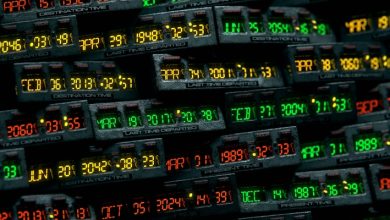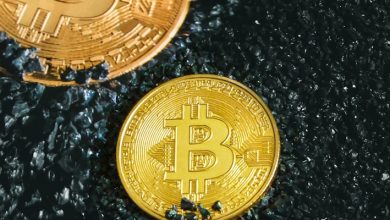What is NFTs? Understanding Non-Fungible Tokens

- Exploring the world of NFTs
- The rise of Non-Fungible Tokens
- Demystifying the concept of NFTs
- Why are NFTs gaining popularity?
- How to create and sell NFTs
- The future of Non-Fungible Tokens
Exploring the world of NFTs
Exploring the world of NFTs can open up a whole new realm of possibilities for artists, collectors, and investors alike. Non-fungible tokens are unique digital assets that are revolutionizing the way we buy, sell, and trade art, music, collectibles, and more.
One of the key features of NFTs is their ability to provide proof of ownership and authenticity through blockchain technology. This means that each token is one-of-a-kind and cannot be replicated or replaced. As a result, NFTs have become highly sought after for their scarcity and uniqueness.
When it comes to exploring the world of NFTs, there are endless opportunities to discover and participate in this exciting new market. From browsing online marketplaces to attending virtual auctions, there are many ways to get involved and start building your own collection of digital assets.
Whether you’re an artist looking to showcase your work, a collector hoping to find rare and valuable pieces, or an investor seeking to capitalize on the growing popularity of NFTs, there is something for everyone in this dynamic and fast-paced industry.
The rise of Non-Fungible Tokens
Non-fungible tokens (NFTs) have been gaining popularity in recent years as a new form of digital asset. Unlike traditional cryptocurrencies like Bitcoin or Ethereum, which are fungible and interchangeable, NFTs are unique and cannot be replicated. This uniqueness is what gives NFTs their value and appeal to collectors and investors alike.
The rise of NFTs can be attributed to a few key factors. One of the main drivers behind their popularity is the growing interest in digital art and collectibles. Artists and creators are using NFTs to tokenize their work and sell it directly to buyers, cutting out the need for intermediaries like galleries or auction houses. This direct connection between creators and consumers has democratized the art world and allowed artists to reach a global audience.
Another factor contributing to the rise of NFTs is the blockchain technology that underpins them. The transparency and security of blockchain make it an ideal platform for buying, selling, and trading digital assets like NFTs. Blockchain ensures that each NFT is unique and authentic, providing buyers with proof of ownership and provenance.
As NFTs continue to gain traction, we are seeing a wide range of industries exploring their potential applications. From music and gaming to real estate and fashion, NFTs are being used to tokenize a variety of assets and experiences. This diversification of the NFT market is attracting a broader audience and driving further adoption of this innovative technology.
Overall, the rise of NFTs represents a shift towards a more decentralized and digital economy. As more people recognize the value of owning unique digital assets, NFTs are likely to become an integral part of the future of finance and collectibles. With their ability to revolutionize how we buy, sell, and own digital goods, NFTs are here to stay.
Demystifying the concept of NFTs
NFTs, or Non-Fungible Tokens, have been gaining popularity in the digital world recently. However, many people still find the concept of NFTs to be confusing and mysterious. Let’s break it down and demystify the concept of NFTs.
NFTs are unique digital assets that are stored on a blockchain. Unlike cryptocurrencies such as Bitcoin or Ethereum, which are fungible and can be exchanged on a one-to-one basis, NFTs are non-fungible, meaning each token is one-of-a-kind and cannot be replicated or exchanged for another token of the same value.
One way to think of NFTs is as digital certificates of ownership for a specific piece of content, whether it be a piece of art, a collectible, a video clip, or even a tweet. By purchasing an NFT, the buyer acquires ownership rights to that specific digital asset, much like owning a physical piece of art or collectible.
The value of an NFT is largely determined by its perceived scarcity, authenticity, and desirability within the marketplace. This has led to a booming NFT market, with some digital assets selling for millions of dollars.
While the concept of NFTs may seem complex at first, understanding the basics of blockchain technology and digital ownership can help demystify the world of non-fungible tokens. So next time you come across the term NFT, you’ll have a better grasp of what it means and how it’s shaping the future of digital ownership.
Why are NFTs gaining popularity?
NFTs are gaining popularity for various reasons, primarily due to their unique characteristics that make them stand out in the digital world. One of the main factors contributing to their popularity is the fact that they are non-fungible, meaning each token is one-of-a-kind and cannot be replicated or exchanged for another token of equal value.
Additionally, NFTs provide a way for creators to tokenize their digital assets, such as artwork, music, videos, and more, allowing them to retain ownership and control over their work. This has opened up new opportunities for artists and content creators to monetize their creations in a decentralized manner.
Furthermore, the blockchain technology behind NFTs ensures transparency and security, providing a secure and tamper-proof way to verify ownership and authenticity of digital assets. This has instilled trust among buyers and collectors, leading to a surge in interest and demand for NFTs across various industries.
How to create and sell NFTs
To create and sell NFTs, you need to follow a few steps. First, you must decide what digital asset you want to tokenize. This could be anything from digital art to music, videos, collectibles, or even tweets. Once you have chosen your asset, you will need to create a digital wallet to store your NFT. Next, you will need to choose a platform to mint your NFT. There are several popular marketplaces such as OpenSea, Rarible, and Foundation where you can mint and sell your NFTs.
After minting your NFT, you will need to set a price for it. Make sure to do some research on similar NFTs to determine a fair price. Once your NFT is listed for sale, you can promote it on social media and other channels to attract potential buyers. Be sure to provide detailed information about the NFT and the story behind it to make it more appealing to collectors.
When a buyer purchases your NFT, the ownership will be transferred to their digital wallet. Make sure to deliver the digital asset to the buyer promptly to maintain a good reputation in the NFT community. Selling NFTs can be a lucrative business if done right, so make sure to put in the effort to create high-quality and unique digital assets that will attract buyers.
The future of Non-Fungible Tokens
NFTs have gained significant attention in recent years, with the market expanding rapidly and showing no signs of slowing down. As technology continues to evolve, the future of NFTs looks promising, with new use cases and applications emerging every day.
One of the key factors driving the future growth of NFTs is the increasing interest from both creators and collectors. Artists, musicians, and other creators are embracing NFTs as a new way to monetize their work and connect with fans. Collectors, on the other hand, are drawn to the unique and ownership aspects of NFTs, making them a valuable addition to their portfolios.
As the technology behind NFTs continues to improve, we can expect to see even more innovative use cases in the future. From digital real estate to virtual fashion, the possibilities are endless. Companies are also exploring ways to integrate NFTs into their businesses, creating new revenue streams and opportunities for growth.
Overall, the future of NFTs looks bright, with continued growth and innovation on the horizon. Whether you’re an artist looking to monetize your work or a collector looking to expand your portfolio, NFTs offer a unique and exciting opportunity to explore.



